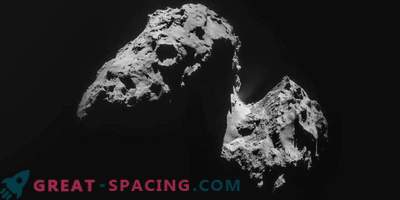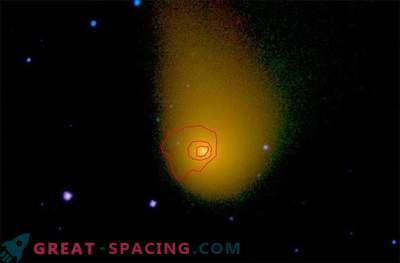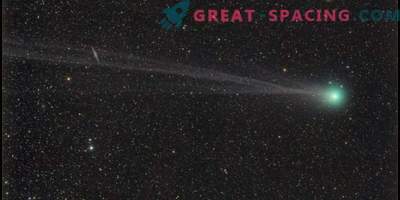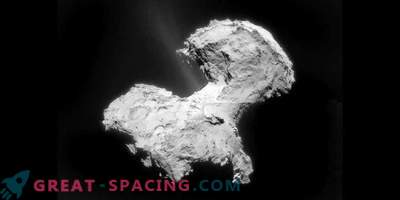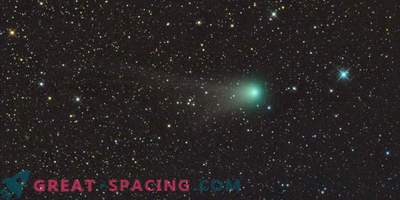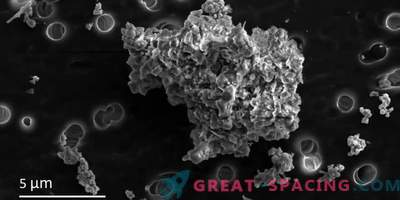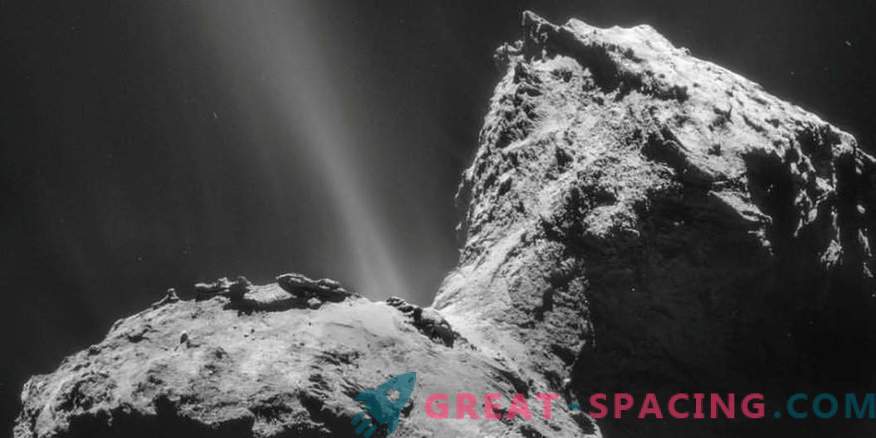
We are not used to treating dust as a valuable material. But an exception is made if it arrives from space, or rather from comet 67P / Churyumov-Gerasimenko. Her analysis provided valuable information not only about the celestial object, but also the history of our system.
From 2014 to 2016 the comet studied the Rosette apparatus using the COSIMA instrument. The researchers were interested in dust particles ejected from the cometary nucleus. It turned out that half the mass of each particle is represented by a carbonaceous material with a predominantly macromolecular organic structure. The second half is not hydrated silicate minerals.
Rosette's tools helped to better understand the nature of the 67P. While traveling around the Sun, the comet continuously releases gas and dust, forming a faint halo. This phenomenon is explained by the sublimation of ices located in the cometary nucleus (they go from a solid state to a gaseous state). The gas enters the atmosphere of a comet and brings with it small dust particles.
The ROSINA tool characterizes and quantifies gases. The analysis showed the composition: water vapor, carbon dioxide, carbon monoxide, molecular oxygen and many small organic molecules consisting of carbon atoms, nitrogen, hydrogen and oxygen. The on-board cameras and the VIRTIS spectrometer examined the surface, demonstrating complex structures: rocks, faults, holes, landslides, and so on. But it is important that the surface is dark (can contain a lot of organic carbon) and has a small amount of ice.
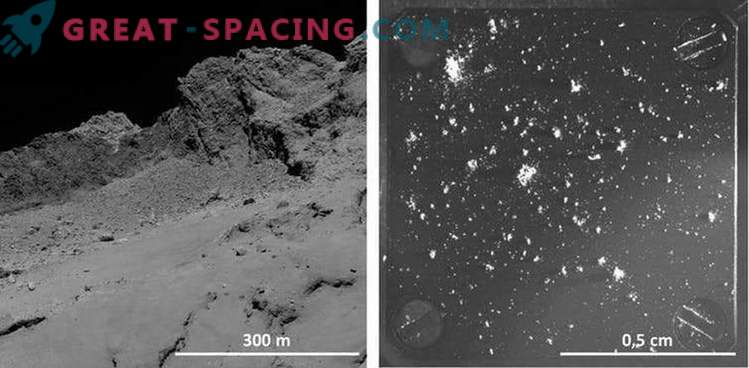
On the left, the surface of the cometary nucleus observed by the Rosetta probe. Condensed ice beneath the surface rises from the depths of a comet when it is heated by the sun. The released gas captures small dust particles. On the right - the target of the COSIMA device demonstrates tiny fragments of a nucleus with a size of up to 1 mm.
COSIMA is a kind of physico-chemical mini-laboratory that collects comet dust particles and measures their chemical characteristics. The device spent 2 years in the orbit of a comet and received more information than scientists could hope for (the device collected 35,000 particles with a diameter of up to 1 mm).
A detailed analysis of the particles allowed us to understand their composition (oxygen, carbon, silicon, iron, sodium, magnesium, calcium, aluminum, etc.), as well as to obtain information about the chemical nature of some components. For example, each dust particle contained by mass about 50% of organic carbon-containing material. He was macromolecular, and therefore created from large structures. Measurements showed that the composition of dust does not depend on the date of collection of particles. That is, there is no difference between the dust ejected closer to the Sun or further. The composition also does not depend on the size of the dust or morphology.
Primary material
Similar results were obtained 30 years ago during the study of Halley's comet with the probes of Giotto and Vega. This proves that comets are among the richest carbon objects in the system. Scientists believe that this is direct experimental evidence. The high abundance coefficient between carbon and silicon, obtained by COSIMA, is very close to the ratio of their abundance in the solar photosphere.
In addition, the silicates in the dust show no noticeable signs of a change in the liquid water. That is, the material is unlikely to change since the formation of the comet. Their study brings us back almost 4.5 billion years ago.
Data from Rosette instruments allowed us to fully disclose the chemical characteristics of the object. Today we can say: if comets played an important role in the emergence of terrestrial life, then the complex macromolecular component seen in 67P should dominate in them.
